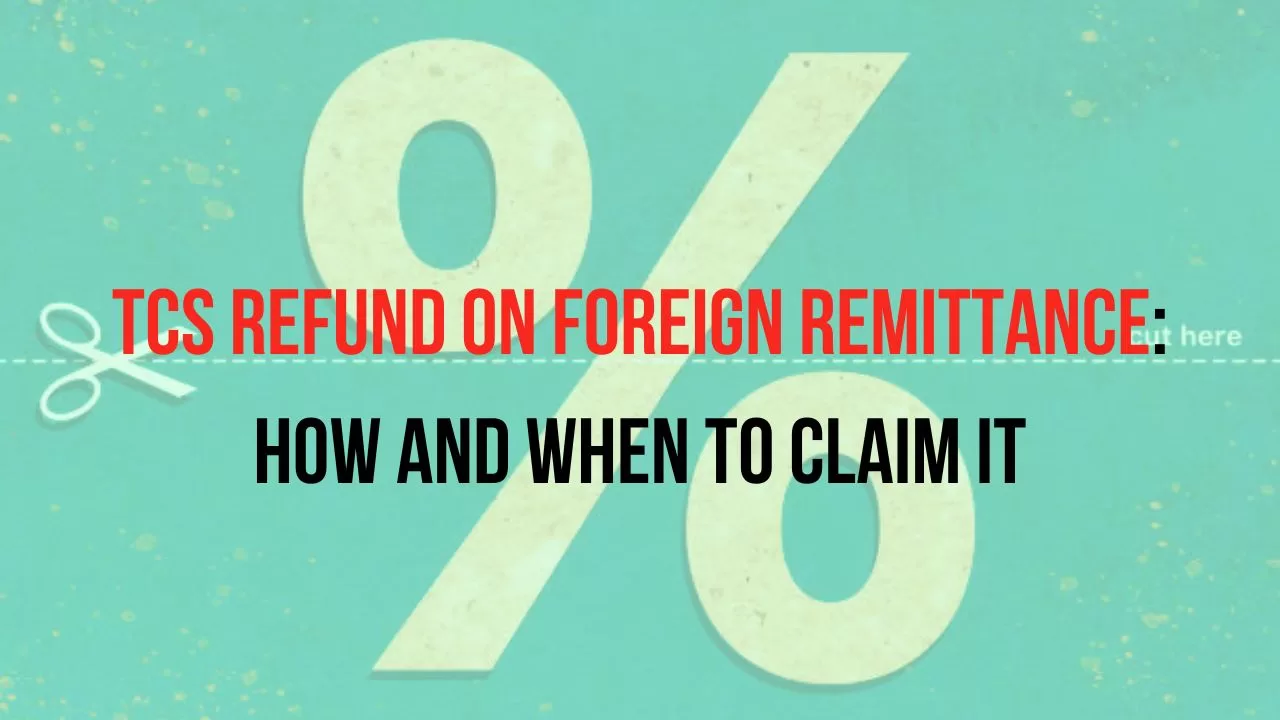TCS on Foreign Remittance: A Brief Overview
TCS (Tax Collected at Source) is a tax levied by the seller on specific transactions, which is then deposited with the tax authorities. Under Section 206C of the Income Tax Act, TCS applies to certain goods and services sold, and the seller is responsible for collecting and depositing the tax. In 2023, the Budget introduced significant changes to TCS on foreign remittances, particularly those under the Liberalized Remittance Scheme (LRS).
Earlier, a 5% TCS was applied on foreign remittances exceeding Rs. 7 lakh, but from July 1, 2023, this rate has increased to 20% without any threshold limit, except for educational and medical expenses. This TCS is applicable when remitting funds abroad for travel, shopping, investments, and other purposes.
What is the TCS Refund Process?
The TCS amount paid is essentially an advance tax collected by the seller. This tax can be offset against the total tax liability when filing your Income Tax Return (ITR) at the end of the financial year. If the TCS paid is higher than your actual tax liability, you are eligible for a refund.
Steps to Claim TCS Refund
Here’s how you can claim the TCS refund:
- Check Your TCS Details:
- When TCS is collected on your foreign remittance, it is reflected in your Form 26AS, which is available on the Income Tax Department’s website.
- File Your Income Tax Return (ITR):
- During the filing of your ITR, enter the TCS details in the relevant sections.
- If your tax liability is lower than the TCS collected, the excess amount can be refunded.
- Refund Processing:
- Once your return is filed, the excess TCS amount will be refunded after processing. Refunds are generally processed within a few months, and if delayed, interest accrues on the refunded amount.
- Automatic Credit of TCS:
- The TCS collected by the seller is automatically credited to your PAN, and you can set it off against any other taxes you owe or claim a refund for the excess amount.
Important Considerations
- Tax Credit: TCS is treated as a tax credit and can be adjusted against the tax liability during ITR filing.
- No Refund Without ITR: To claim the refund, you must file your tax return. Without filing an ITR, the refund process is not applicable.
- Form 26AS: Ensure that your TCS appears in your Form 26AS. This form acts as proof of the tax collected and deposited in your name.
Example of TCS Refund Calculation
Let’s consider an example to understand the calculation:
- Income from Salary: Rs. 10,00,000
- Income from Other Sources: Rs. 3,00,000
- TCS Collected on Foreign Tour (20% of Rs. 5,00,000): Rs. 1,00,000
- Gross Tax Liability: Rs. 1,14,400
- Net Tax Payable: Rs. 14,400 (after deducting the TCS)
In this case, since the TCS collected (Rs. 1,00,000) is higher than the actual tax liability (Rs. 1,14,400), the excess amount of Rs. 85,600 can be claimed as a refund when filing the ITR.
| Remittance Type | TCS Rate | Amount | TCS Collected |
|---|---|---|---|
| Foreign Remittance (excluding Education/Medical) | 20% | Rs. 5,00,000 | Rs. 1,00,000 |
TCS Refund Process: Key Points to Remember
- Refund Process: TCS refunds are processed once your ITR is filed. Ensure that you enter all necessary details accurately to avoid delays.
- Interest on Delays: If the refund is delayed beyond a certain period, the government may pay interest on the refund amount.
- E-filing Platform: Use the official Income Tax e-filing portal to file your returns and claim refunds.
Conclusion
The TCS refund process for foreign remittances under the Liberalized Remittance Scheme can be easily claimed if the tax paid is higher than the actual tax liability. Ensure that the TCS is reflected in your Form 26AS and file your ITR correctly to get your refund. With the increase in TCS rates, it’s important to understand the refund procedure to avoid overpaying taxes.
